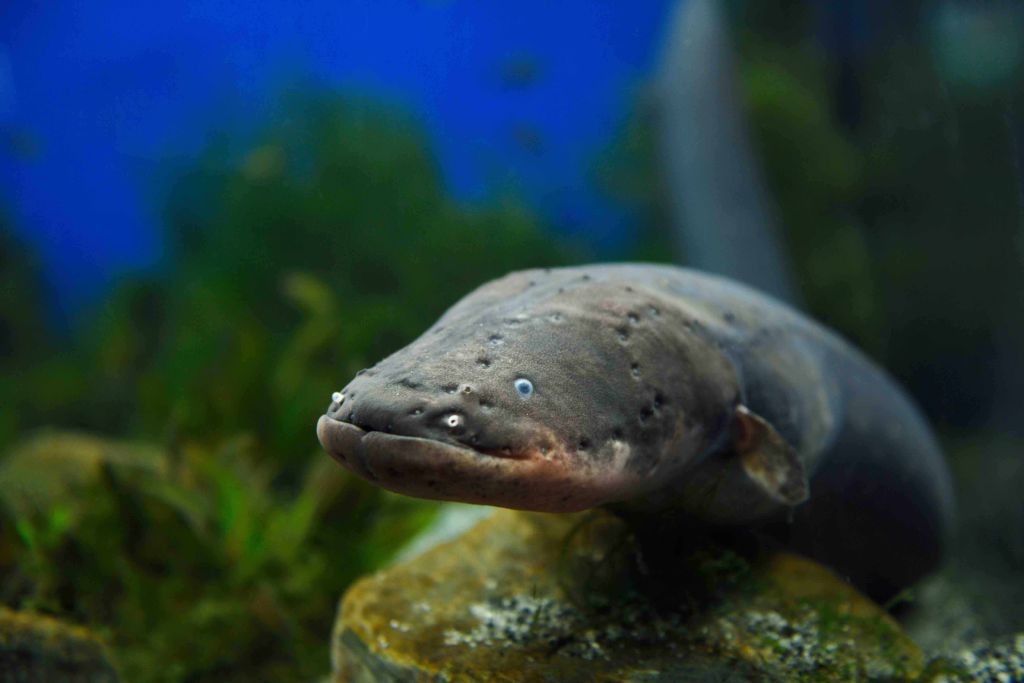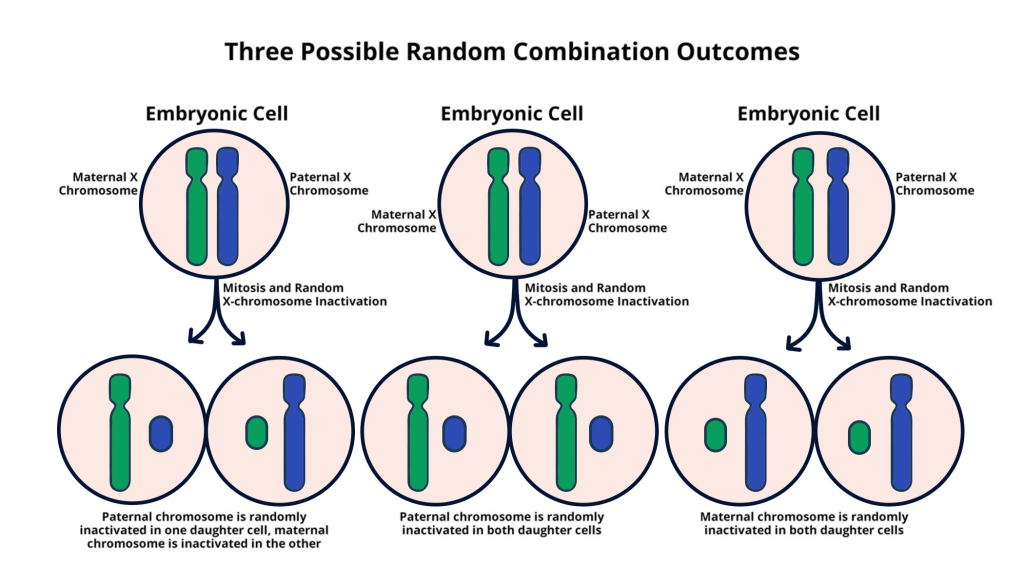
Electric fish are truly fascinating creatures that possess a remarkable ability to navigate their environments through electric fields. By generating and sensing these fields, they communicate, hunt, and even mate, all while managing their survival in murky waters. This extraordinary skill not only captivates scientists but also opens exciting avenues in the field of NeuroAI, where researchers explore the intersection of biology and artificial intelligence. Particularly, the study of electric fish aids in understanding concepts like collective intelligence, which emerges from the interactions of various goal-driven entities. As these unique species continue to be a focal point of research, insights gained could lead to advancements in multi-agent intelligence, revealing how both living organisms and artificial agents can thrive through coordinated interactions.
Also known as weakly electric fish, these marine inhabitants utilize an electro-sensory system to perceive their surroundings, marking them as subjects of interest in advanced studies. Such creatures, including the notable elephantnose fish, utilize electric organ discharges in communication and navigation, transforming their underwater world into an electric tapestry. The exploration of their behaviors provides a fascinating glimpse into the mechanisms underlying both natural and artificial forms of collective intelligence. Researchers are increasingly keen to unravel how these remarkable fish might shed light on broader themes in multi-agent intelligence and the potential applications in designing artificial systems that mimic these biological processes. Through these analyses, scientists not only deepen their understanding of aquatic social structures but also build a bridge towards more advanced technological interactions.
Understanding Collective Intelligence Through Electric Fish
Collective intelligence is a fascinating phenomenon that reveals how individual entities can interact to produce greater outcomes than they could achieve alone. This concept is prominently illustrated by the behaviors of electric fish, such as the elephantnose fish, which communicate through electric pulses. Unlike simplistic models of interaction that only consider direct pairwise exchanges, collective intelligence embodies the complexity of social dynamics that arise when larger groups interact. In nature, these electric fish demonstrate how shared communication can enhance cooperative strategies, particularly in challenging environments like muddy rivers.
The ability of electric fish to emit distinct electric organ discharges allows them to coordinate actions effectively. When one fish discovers food, it can share this information with its neighbors through electrical signals, which can lead to group foraging strategies. This emergent behavior not only showcases their cooperative instincts but also highlights essential principles of NeuroAI, where understanding such interactions can inform the design of artificial agents. By modeling these social dynamics in both natural and synthetic contexts, researchers can explore how collective intelligence can be harnessed to improve AI systems and facilitate better cooperation among autonomous agents.
The Role of Electro-Sense in Navigation and Communication
Electro-sense is a critical adaptation that enables electric fish to navigate and communicate effectively within their environments. Specifically, the elephantnose fish utilizes its electro-sense to create a mental map of its surroundings by detecting electric fields generated by other organisms and objects. This mechanism allows the fish to thrive in murky waters where visibility is limited, showcasing the remarkable capabilities of neurobiological systems in nature. The precise alterations in electric discharges enable these fish to convey nuanced information regarding their intentions and actions, facilitating complex social interactions.
By studying how electric fish use electro-sense, scientists gain valuable insights into the principles of multi-agent intelligence. This understanding of communication protocols can then be translated into developing adaptive algorithms for artificial agents. Researchers like Kanaka Rajan are leveraging these insights to develop AI systems capable of mimicking the complexities seen in nature, improving human-machine interactions and promoting a more profound understanding of social dynamics across various forms of intelligence.
The Future of AI Inspired by Collective Behavior of Electric Fish and Cooperative Strategies: The study of electric fish not only illuminates biological phenomena but also provides a vital lens through which researchers can investigate the future of artificial intelligence. Inspired by the group’s ability to share information and collaborate effectively, AI developers are beginning to integrate concepts of collective intelligence into algorithm design. The application of these principles can help build systems that respond intelligently to changing environments, much like electric fish adapt their communication and social strategies based on food availability or threats.
As we look ahead, the interplay between electric fish behavior and AI research raises questions about the nature of cooperation and competition in dynamic group settings. What can we learn from these aquatic creatures about scaling cooperation among diverse artificial agents? Understanding the balance between competition and collaboration can lead to the refinement of AI agents that can work effectively in teams, much like swarms in nature. Such systems carry the potential to address complex challenges in areas ranging from environmental monitoring to disaster response.
Insights from Neural Mechanisms of Electric Fish
Beyond their behavioral dynamics, electric fish provide researchers with insights into the neural mechanisms underlying perception and interaction among different agents. The neurobiology of these creatures showcases how sensory information is processed and translated into adaptive behaviors. By dissecting the pathways involved in electro-sensory processing, scientists are uncovering how these neural circuits contribute to the fish’s remarkable ability to navigate and communicate in complex environments. This line of research yields relevant implications for NeuroAI, as it bridges neurobiology with artificial systems, enhancing our understanding of intelligent behavior.
Additionally, the application of such findings can influence the programming of artificial agents to better mimic biological counterparts. By constructing neural models that reflect the decision-making processes observed in electric fish, researchers can improve AI’s efficiency in communication and coordination. The integration of insights from electric fish into the design of new models can provide a framework for developing advanced systems capable of collective decision-making, ultimately leading to better performance in tasks requiring coordination and interaction.
Modeling Behavior of Electric Fish for AI Development
Researchers are now modeling the behaviors of electric fish to inform the development of sophisticated artificial intelligence. By creating computer simulations that replicate the social dynamics of these creatures, scientists can manipulate variables and study how collective intelligence emerges over time. These models serve as an invaluable tool for understanding the factors that drive cooperation and competition within groups, offering insights that could revolutionize how AI systems are designed to interact both with each other and with humans.
The results from these simulations have revealed that elements like food availability and environmental pressures can significantly impact collaborative or competitive behaviors in electric fish. This modeling translates into practical applications for AI, where understanding these dynamics can lead to more resilient systems that adaptively respond to their surroundings. As AI systems become increasingly integrated into everyday life, insights drawn from electric fish can help engineers create agents that not only replicate natural intelligence but also enhance their social capabilities in shared tasks.
The Evolutionary Implications of Electric Fish Behavior
The intricate behaviors displayed by electric fish also provide a window into evolutionary processes and how they shape interactions within species. Observing how these fishes adapt their social strategies based on their environments illustrates the principle of natural selection in action. For instance, during periods of reduced food sources, heightened competition can lead to different social structures and behaviors, demonstrating that cooperative strategies are not merely innate but evolve based on context and necessity.
Such evolutionary insights can inform AI researchers about the potential for designing agents that develop cooperative traits over time, much like electric fish. By understanding how social dynamics can shift due to environmental pressures, engineers can create AI systems capable of evolving their strategies through simulated experiences. This research could pave the way for developing resilient AI systems that can dynamically adapt to challenges, driving innovation in fields including robotics, logistics, and collaborative networks.
The Intersection of Neurobiology and Artificial Intelligence
The investigation of electric fish illustrates the profound intersection between neurobiology and artificial intelligence. By studying the unique features of how these organisms interact through their electro-sensory communication, researchers gain vital knowledge that can enhance the field of NeuroAI. The biological principles observed in electric fish can serve as blueprints for developing new AI methodologies, particularly those focused on social interaction and collective decision-making.
NeuroAI seeks to create artificial systems that not only mimic but also work alongside biological entities to solve problems. Understanding the neurobiological underpinnings in electric fish provides essential insights into the scalability of such systems. This knowledge could be critical when designing multi-agent AI networks that require efficient communication and cooperation, reflecting the collaborative nature found within schools of electric fish.
Predicting Future Trends in AI: Insights from Electric Fish
As researchers continue to explore the behavioral patterns of electric fish, there are significant implications for predicting future trends in AI. The adaptability exhibited by these creatures can provide a framework for next-generation artificial systems that can learn from their environment and adjust their interactions accordingly. Future AI platforms inspired by the electric fish’s communication methods may revolutionize industries where real-time feedback and dynamic teamwork are essential.
Understanding the trends observed in electric fish can guide AI developers toward creating more responsive agents that excel in complex environments. By leveraging principles of collective intelligence, AI systems can evolve to perform collaborative tasks more effectively, enhancing performance not just in isolated scenarios but across various fields, from healthcare to environmental management. The journey from the depth of river systems to the forefront of AI could hold transformative potential for technology in the coming decades.
Challenges in Studying Electric Fish for AI Applications
While the study of electric fish presents fantastic opportunities for AI development, it is not without its challenges. Ethically and logistically, researchers must carefully design experiments that allow for the observation of natural behaviors without disturbing the fish’s habitat or natural instincts. Creating artificial environments that mimic their complex aquatic ecosystems is essential for generating reliable data to inform AI applications.
Moreover, translating findings from electric fish to AI systems requires navigating the complexities of biological diversity and variability in behaviors. Each species may exhibit different forms of social interactions influenced by their ecological context, making it imperative for researchers to consider these factors when applying insights to artificial agents. The challenge remains to extract universally applicable principles that can enhance the development of adaptive, collaborative AI systems based on the nuanced behaviors of these fascinating electric fish.
Frequently Asked Questions
What role do electric fish play in the study of NeuroAI?
Electric fish, particularly species like the elephantnose fish, are integral to studying NeuroAI because they exhibit unique electro-sense abilities that allow them to communicate through electric pulses. This remarkable skill provides insights into collective intelligence and how multi-agent systems can be modeled, offering a biological basis for developing new AI frameworks.
How do weakly electric fish demonstrate collective intelligence?
Weakly electric fish, such as the elephantnose fish, exhibit collective intelligence through coordinated behaviors that rely on electric organ discharges (EODs). By emitting specific electric pulses, these fish can share information, such as food locations, enhancing their foraging efficiency and demonstrating emergent communication patterns vital for understanding social dynamics in both biological and artificial agents.
How can modeling the behavior of electric fish aid in multi-agent intelligence research?
Modeling the behaviors of electric fish can aid multi-agent intelligence research by simulating their unique communication and cooperative strategies. This allows researchers to explore how collective intelligence emerges in groups, providing valuable data that can be applied to improve the interaction algorithms of artificial agents and develop more sophisticated AI systems.
What insights about social dynamics can be gained from studying electric fish?
Studying electric fish like the elephantnose fish reveals insights into social dynamics such as cooperation and competition in groups. The complexity of their interactions highlights how individual behaviors contribute to collective outcomes, informing both biological sciences and the design of artificial agents capable of collaborative decision-making.
Why is the electric organ discharge (EOD) important for electric fish?
The electric organ discharge (EOD) is crucial for electric fish as it serves as their mode of communication and environmental sensing. Through EODs, fish communicate about mating, competition, and cooperation, providing a clear example of how sensory input can guide behaviors in both natural and artificial systems.
What implications does the research on electric fish have for artificial intelligence?
Research on electric fish has profound implications for artificial intelligence by illustrating how collective intelligence can be harnessed in AI systems. Insights gained from these biological models can inform the development of AI swarms, enhancing problem-solving capabilities and adaptability in dynamic environments.
How do weakly electric fish use their electro-sense for navigation?
Weakly electric fish utilize their electro-sense by emitting electric pulses and detecting the resultant feedback in their environment. This ability allows them to navigate murky waters effectively, identify obstacles, and interact with other fish, significantly contributing to their survival and social behavior.
Can studying electric fish contribute to understanding human social interactions?
Yes, studying electric fish can contribute to understanding human social interactions by providing models of how collective behaviors emerge from individual actions. This research can shed light on the complexities of human social dynamics and interactions, potentially benefiting fields like psychology, sociology, and AI design.
| Key Points | |
|---|---|
| Subject of Study | Elephantnose fish (Gnathonemus petersii) – a weakly electric fish. |
| Research Focus | Understanding collective intelligence and multi-agent interaction through electric fish behavior. |
| Methodology | Modeling behaviors of electric fish through artificial intelligence simulations. |
| Findings | Emergent behaviors in groups, where fish utilize communication for foraging efficiency. |
| Implications | Insights into human cooperation and potential applications in AI systems. |
Summary
Electric fish play a crucial role in advancing our understanding of collective intelligence. By studying the behaviors of weakly electric fish like the elephantnose fish, researchers can uncover insights into complex social dynamics that apply to both biological and artificial systems. This research not only enriches the field of NeuroAI but also helps develop AI systems capable of cooperative problem-solving, showcasing the potential of nature to inspire technological innovation.


